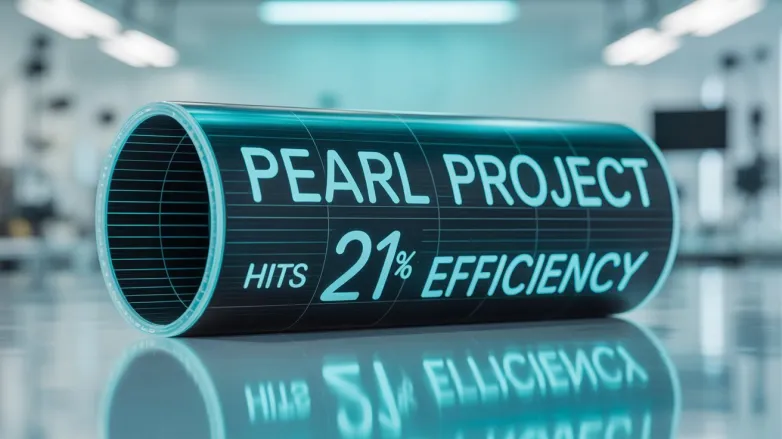PEARL Project Hits 21% Efficiency in Flexible Solar Cells
- EU's PEARL project advances flexible perovskite solar cells to 21.6% efficiency, emphasizing sustainability and circular manufacturing, paving the way for innovative solar applications.

The EU's PEARL project has achieved significant milestones in developing flexible perovskite solar cells, surpassing 21% efficiency. Utilizing advanced materials and roll-to-roll manufacturing, the project has seen Spain's ICIQ reach a record 21.6% efficiency with molecular surface passivation, while Rome Tor Vergata and VTT achieved 17.03% and 14.8% efficiency, respectively. The Dutch TNO group reported 9.1% efficiency using roll-to-roll coating, and minimodules of 36 cm² showed 4.5% efficiency. Stability improvements have been noted, with devices operational for over 2,000 hours in harsh conditions, moving closer to the 25% efficiency target for real-world applications.
The project emphasizes sustainability, with life cycle analyses indicating that recycled PET, carbon electrodes, and green energy can reduce the carbon footprint by half. Efforts to recover lead and cesium from production waste support a circular manufacturing model. Future plans include scaling up roll-to-roll pilot manufacturing, testing larger modules outdoors, and presenting findings at a European conference. These advancements position PEARL's flexible perovskite modules as viable options for applications like building-integrated photovoltaics and IoT.
How is the EU's PEARL project advancing flexible perovskite solar cell technology?
- Development of new materials to enhance the efficiency and stability of perovskite solar cells.
- Implementation of innovative roll-to-roll manufacturing techniques to enable large-scale production.
- Collaboration with multiple European research institutions to leverage diverse expertise and resources.
- Focus on molecular surface passivation to improve cell performance and longevity.
- Exploration of alternative, sustainable materials to reduce environmental impact.
- Integration of advanced coating technologies to optimize the production process.
- Emphasis on achieving higher efficiency rates to meet commercial viability standards.
- Continuous testing and validation of solar cell performance under real-world conditions.
- Commitment to reducing the carbon footprint through sustainable practices and materials
- Efforts to establish a circular economy by recovering valuable materials from production waste.
- Plans to expand pilot manufacturing capabilities and test larger modules in outdoor environments.
- Presentation of research findings and technological advancements at international conferences.
- Potential applications in building-integrated photovoltaics and Internet of Things (IoT) devices.
Also read

